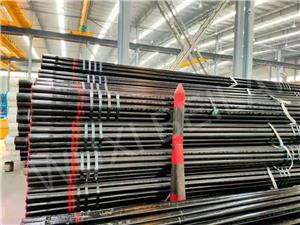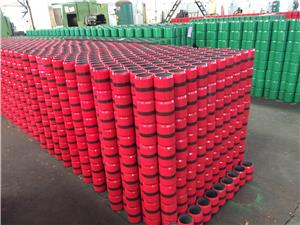Why do oil wells need casing instead of cement?
The use of casing instead of direct cement in oil Wells is mainly based on the following considerations:
The role of the casing
Supporting the well wall: casing, as the skeleton of the oil well, can effectively support the well wall, prevent the well wall collapse, and ensure the safety of the drilling process.
Isolated formations: During drilling, you will encounter formations with different pressures and different fluid properties. Casing can separate these formations to prevent fluid interference between the different formations and ensure the purity and efficiency of oil and gas production.
Borehole protection: Casing protects the borehole from debris, mud and other impurities produced during the drilling process, which can affect subsequent oil and gas production.
Providing access: The casing provides access for oil and gas production, allowing oil and gas to flow smoothly from the underground reservoir to the surface.
The role of cement
Although cement has important applications in well construction, it is not used to replace casing. Cement is mainly used in cementing operations, that is, the casing is fixed in the hole and the gap between the casing and the wall is filled to improve the stability of the wall. Specifically, the role of cement includes:
Improve wall stability: The hard material formed after cement sets can firmly support the casing and the wall, preventing the wall from collapsing.
Prevent fluid leakage: cement can fill the tiny gap between the casing and the well wall to prevent groundwater, oil and gas and other fluids from leaking into the well through the gap, affecting the oil and gas production effect.
Casing protection: The cement layer also protects the casing from erosion and damage from the external environment, extending the service life of the casing.
Why not just use cement?
Lack of strength: When cement is used alone as a wall support material, its strength may not meet the needs of long-term production of the well. When the cement layer is affected by underground pressure, temperature change and other factors, it is easy to crack and fall off.
Poor sealing: The cement is relatively poorly sealed and it is difficult to completely fill the tiny gaps between the casing and the well wall. These cracks may become the channels of fluid leakage, affecting the oil and gas production effect.
Construction is difficult: Cementing directly into the hole requires precise construction process and equipment support. Once the construction is improper, it may lead to cementing failure or leave a safety hazard.
In summary, the reason why Wells need to use casing instead of direct cement is that casing provides better support, isolation and protection. At the same time, cement as a cementing material also has important applications in oil well construction, but it needs to be used in combination with casing to achieve the best results.




